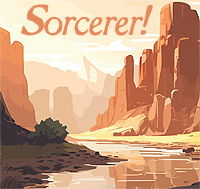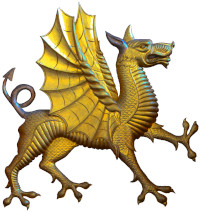Axes have been joined to handles or hafts in many ways, including lashing and even growing, with some axes made by way of preparing a stone axe head and driving it into a growing branch and letting that branch mature around the business end of the weapon before harvesting.
Axes in the ancient world are most heavily symbolized by the “Labyrinth” of Minoan Crete, which we take to be maze, but which literally means “House-of-the-double-axe.” Axes were regarded as the weapons of the heroine and the Amazon from earliest antiquity, presumable because women were the first to be able to ride a horse, being smaller than men, and that a long-handled, light-headed axe would make sense as a high-impact and yet light riding weapon. A double-headed axe is simply an axe with two edges. One would always cleave with the blade that aligned with the face of the fist. But an axe of bronze would lose its edge quick, dealing with shields, so a double-headed axe would be ideal for war.
Mechanically, the axe favors the man with the highest shoulder socket, being the tall man. But on horseback, this could be achieved by anyone relative to a foot soldier. It has been difficult to simulate axe combat with padded weapons, without inviting concussions, because, simply putting padding on the end of a stick to make it less wieldy than a stick and to represent an axe, adds force. Just a few ounces of padding put onto the end of a 2 or three foot stick makes a big difference.
Now weight it.
Then sharpen it.
An axe can be used for hooking shields and necks and ankles if you are downed and provides an answer for the shield, able to shiver a shield more forcefully than a sword, with cheaper material, less steel and less carry weight. I once suffered a severe wrist sprain using a 14-pound aspis shield against a light, dull axe as the axe-head [and the haft broke] stroke the shield so hard as to cause it to flex and compress my wrist. The shield may have survived but the axe haft and wrist did not continue as functional elements of the combat. This video from 2005 exists online. Heck, the “axe head” was two stove top burner plates. Imagine if it had been sharp iron?
The Frankish warriors, the German tribes who invaded France in the 400s and made it their own, were renowned for using a Francisca, which was a heavy throwing axe, which was employed to defeat shields by imbedding that axe in them and making them unwieldy. So, instead of throwing a pilum and then drawing a sword, to compromise a shield and then cut its owner, as the legionnaire had done, the Frank could throw one axe and close with the other.
Axes are second only to hammers and malls in dealing with helmets. One defeats a helmet most simply by shocking the neck that supports the head that wears it and knocking that man out.
An axe also damages flesh and bone through mail and padding better than a sword, due to immediate leverage at the point of impact.
Axes are fearsome leg-cleaving tools. See the battle of Visby on Gotland for the high frequency of leg cleaves in Norse battle of the mailed era. This is covered extensively in John Keegan’s masterful book The Face of Battle.
In the latter half of the mailed era, Robert the Bruce, famously cleaved a rival knight from the saddle before the battle of Bannockburn. Using the axe in the saddle permitted the rider to rise in the stirrups and then descend with full bodyweight drop, whereas ancient riders without stirrups used pendulum stroking mechanics. Ever after the axe was adored by Scotsmen despite a real lack of timbered lands. The loch-bar axe was used as late as the 1700s in battle against the British, taken down from atop family hearths to repel the invader. Might this have had to do with the habit of the Scotts running down upon the invader from the lowlands and cleaving downward?
The axe would fade from glory and remain in three forms into the early modern era:
-the halberd, the premier polearm of the late middle ages and early modern era, which would eventually be reduced to a small size and used by officers of the gunpowder armies of convict slave soldiers as a means to terrorize their own men
-the boarding axe, a nautical weapon that could be used to climb the side of a wooden ship and also spike its captain’s head
-the tomahawk, invented by William Penn as a trade good to sell to Indian warriors, was based on heavier and earlier hatchets, cut down European halberd heads and long-handled stone age combat axes, to serve as a side-arm for the long-range war-fighter and slave-catcher. It was very light, could be used to smoke, throw and cleave and was re-hafted with ease and paired well with the long-knife as a close combat weapon.
The axe favors the taller man, the stronger man and the man with more endurance, as it requires more activity than the sword. It is therefore a weapon for warriors over soldiers, requiring high levels of conditioning and favoring the aggressor over the defender.










